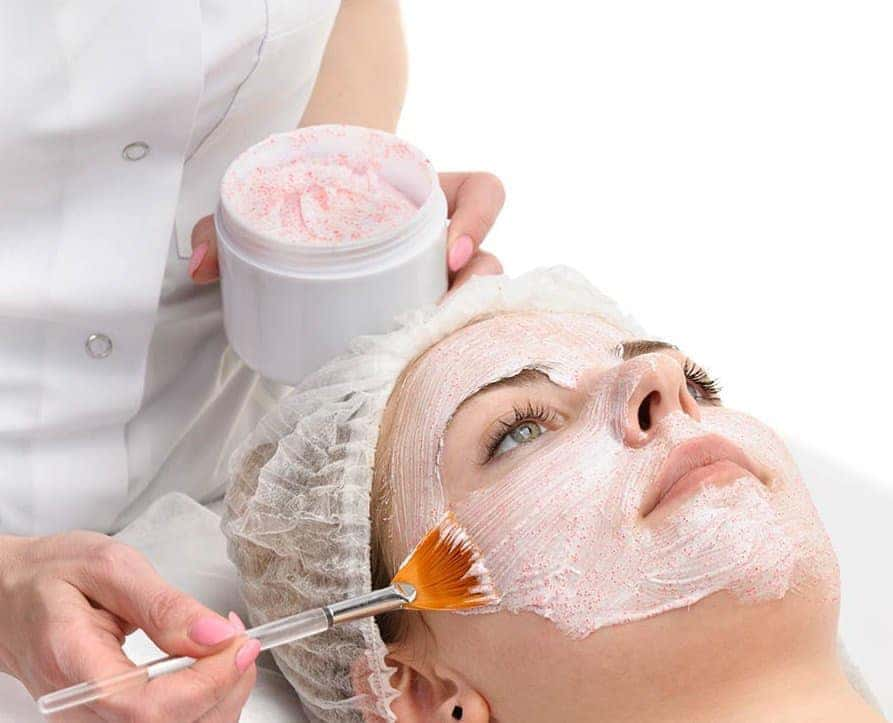What do you know about Saffron?
What do you know about Saffron?
Saffron has a very characteristic smell and taste. Although, considered the most expensive spice in the world, saffron is still favored by many people, due to its nutritional values that are considered extremely impressive for health.
Saffron is a hand harvested dried pistil from Crocus Sativus flowers around late October to early November. This is a native plant of Southwest Asia, each Crocus Sativus flower produces only 3 pistils, in order to harvest 500g of saffron, people need about 80,000 to 90,000 flowers. Due to the amount of labor involved in harvesting, saffron is considered one of the most expensive spices in the world.

There are 3 famous saffron raw material regions including: Kashmiri region from India, Iran and Spain. Among these three raw materials, saffron from Kashmir has better quality because the climatic and soil conditions are suitable for them.
Crocus Sativus flowers are purple. Flowers bloom in the fall, so this is the right time to harvest. Saffron is harvested a few hours before sunrise, when the saffron petals are still unopened, it's easy to pick and to help protect the precious red pistil inside. Buds are selected and stored very carefully. The pistil is carefully separated from the wet petals and dried. It is a delicate process that takes hours with a skilled hand and patience.
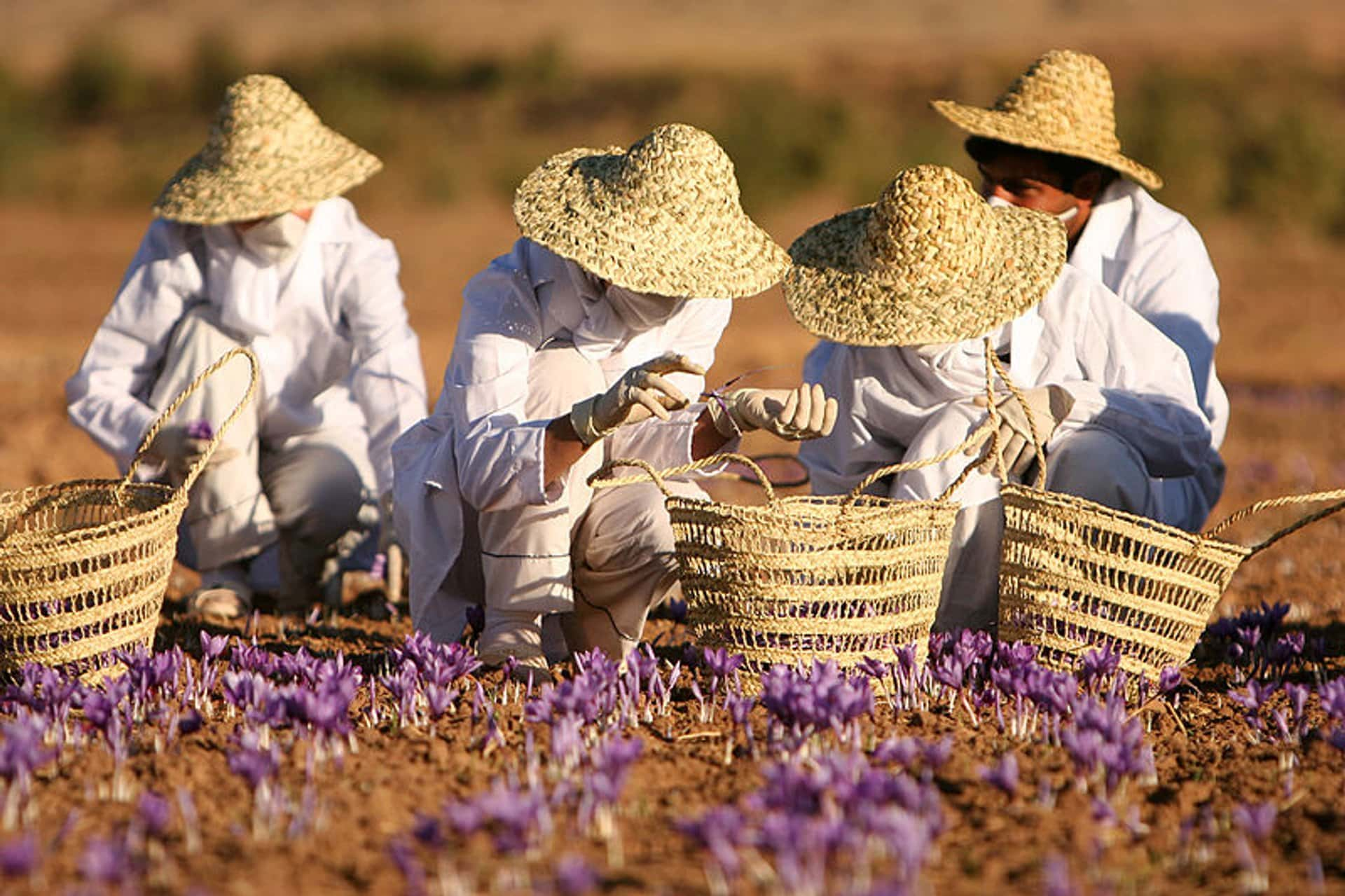
Saffron has a very characteristic smell and taste. Although, considered the most expensive spice in the world, saffron is still favored by many people,due to its nutritional values that are considered extremely impressive for health.
Saffron contains substances that alter mood, kill cancer cells, reduce swelling and act like antioxidants. Saffron is a powerful spice packed with antioxidants. Best of all, it's generally safe for most people and easy to add to your diet. It can be used as tea, baking ingredients and seasoning for meals.
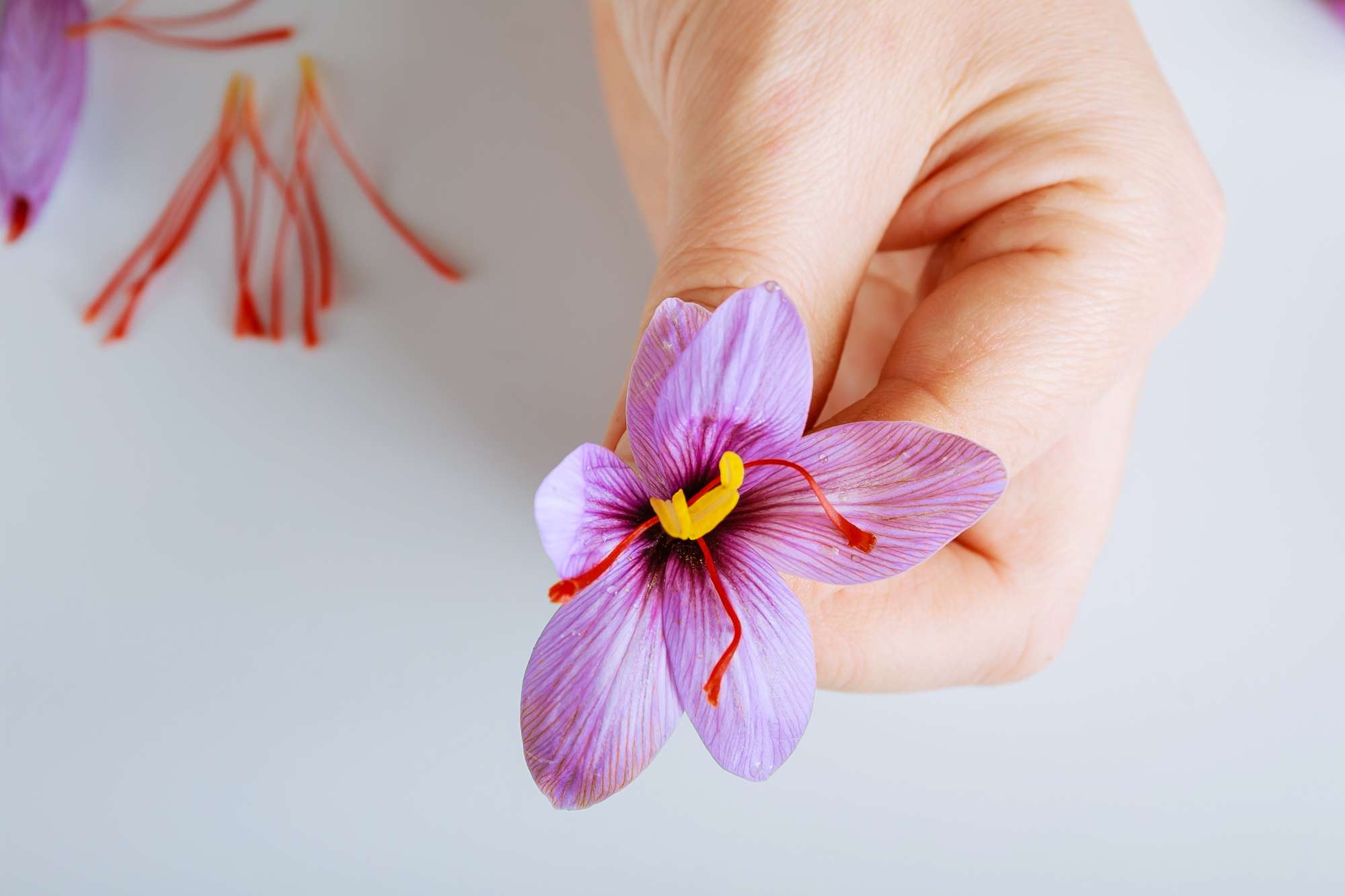
.jpg)

.jpg)
NUTRITION FROM SAFFRON
Iron and Potassium
Saffron contains a large amount of potassium and iron, which helps the absorption of energy take place better. Iron has the ability to stimulate the production of red blood cells, purifying the blood for a better cardiovascular system.
Vitamin B, Vitamin C
There are many different vitamins in pistil, but the most prominent are vitamins B and C. Vitamin B6 in pistil is very good for the synthesis of Hemoglobin, very good for the cardiovascular system, maintaining blood sugar levels. And vitamin C is very good for health, helping to fight infections for a healthier body.
Manganese
With a large amount of Manganese, it has the ability to regulate the body, help absorb Calcium and metabolize Carbohydrates. In addition, Manganese also supports bone and tissue formation and stimulates sex pigmentation.
Contains flavonoids and apocarotenoids
These are two substances that are mentioned a lot in saffron that have the ability to improve the quality of sleep. In addition, this substance also has the ability to sedation, except phlegm, aphrodisiac, diabetes, asthma, kidney stones, ... and a series of other great uses.
Contains antioxidants
Saffron contains an antioxidant called curcumin, a polyphenol that supports the treatment of nutrition-related diseases. In addition, antioxidants also help reduce wrinkles, enhance collagen, reduce melasma and compounds such as Crocin, Crocetin, Safranal, ... are also very beneficial to health.
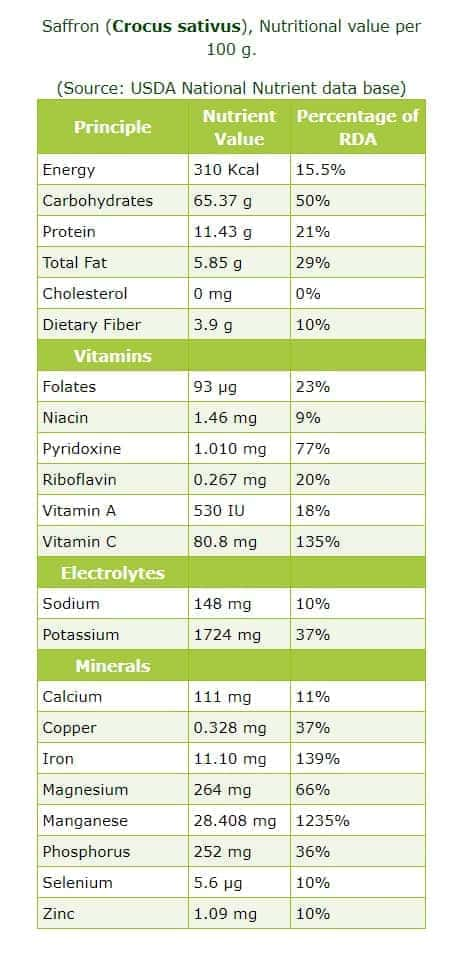
11 IMPRESSIVE HEALTH BENEFITS OF SAFFRON
1. A Powerful Antioxidant
Saffron is rich in plant compounds that act as antioxidants, such as crocin, crocetin, safranal, and kaempferol. Antioxidants help protect your cells against free radicals and oxidative stress.
2. Treat Depressive Symptoms
Saffron is nicknamed the “sunshine spice.”, may help treat symptoms of mild-to-moderate depression, but more studies are needed before definite recommendations can be made.
3. May Have Cancer-Fighting Properties
Saffron is high in antioxidants, which may help kill cancer cells while leaving normal cells unharmed. However, more human research is needed.
4. May Reduce PMS Symptoms
Premenstrual syndrome (PMS) is a term that describes physical, emotional, and psychological symptoms occurring before the start of a menstrual period. Both eating and smelling saffron appears to help treat PMS symptoms, such as irritability, headaches, cravings, pain, and anxiety.
5. May Act as an Aphrodisiac
Aphrodisiacs are foods or supplements that help boost your libido. Saffron may have aphrodisiac properties for both men and women and may especially help those taking antidepressants.
6. May Reduce Appetite
Snacking is a common habit that may put you at risk of gaining unwanted weight. Saffron has been shown to reduce snacking and curb your appetite. In turn, these behaviors may help you lose weight.
7. May reduce heart disease risk factors
Animal and test-tube studies indicate that saffron’s antioxidant properties may lower blood cholesterol and prevent blood vessels and arteries from clogging.
8. May lower blood sugar levels
Saffron may lower blood sugar levels and raise insulin sensitivity, as seen in test-tube studies and mice with diabetes.
9. May improve eyesight
Saffron appears to improve eyesight in adults with age-related macular degeneration (AMD) and protect against free radical damage, which is linked to AMD.
10. May improve memory
Saffron’s antioxidant properties may improve cognition in adults with Alzheimer’s disease.
11. Easy to Add to Your Diet
Saffron has a subtle taste and aroma, which makes it easy to add to your diet. It pairs well with savory dishes and should be soaked in hot water to give a deeper flavor. Alternatively, you can purchase saffron in supplement form to reap its benefits.
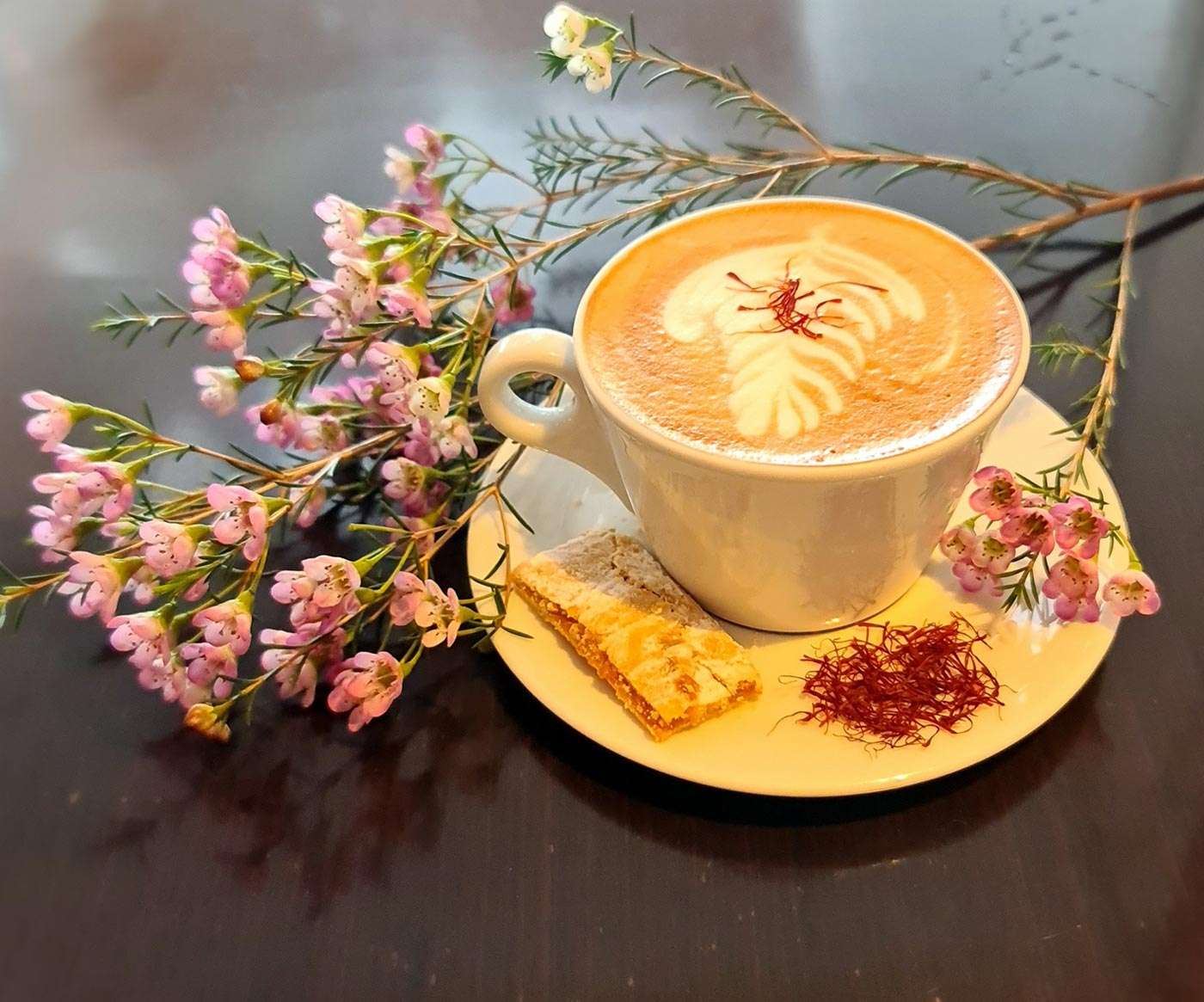
PRECAUTION AND SIDE EFFECTS
Saffron is generally well tolerated. It usually isn’t associated with side effects or issues.
Yet, like all plant substances, saffron can cause allergic reactions. A 2015 study found that saffron workers in India developed contact dermatitis caused by saffron. A 2007 study also found that saffron pollen can cause allergic reactions involving the skin or respiratory system.
Possible signs of an allergic reaction include: sneezing, runny nose, itchy, red eyes, dry skin, skin rash (redness and swelling) or burning skin, hives
Avoid using saffron in any form if you’re pregnant. According to a 2014 study, saffron can promote uterine contractions, which increases the risk of miscarriage.
Compiled and penned by Crocus Media
Products
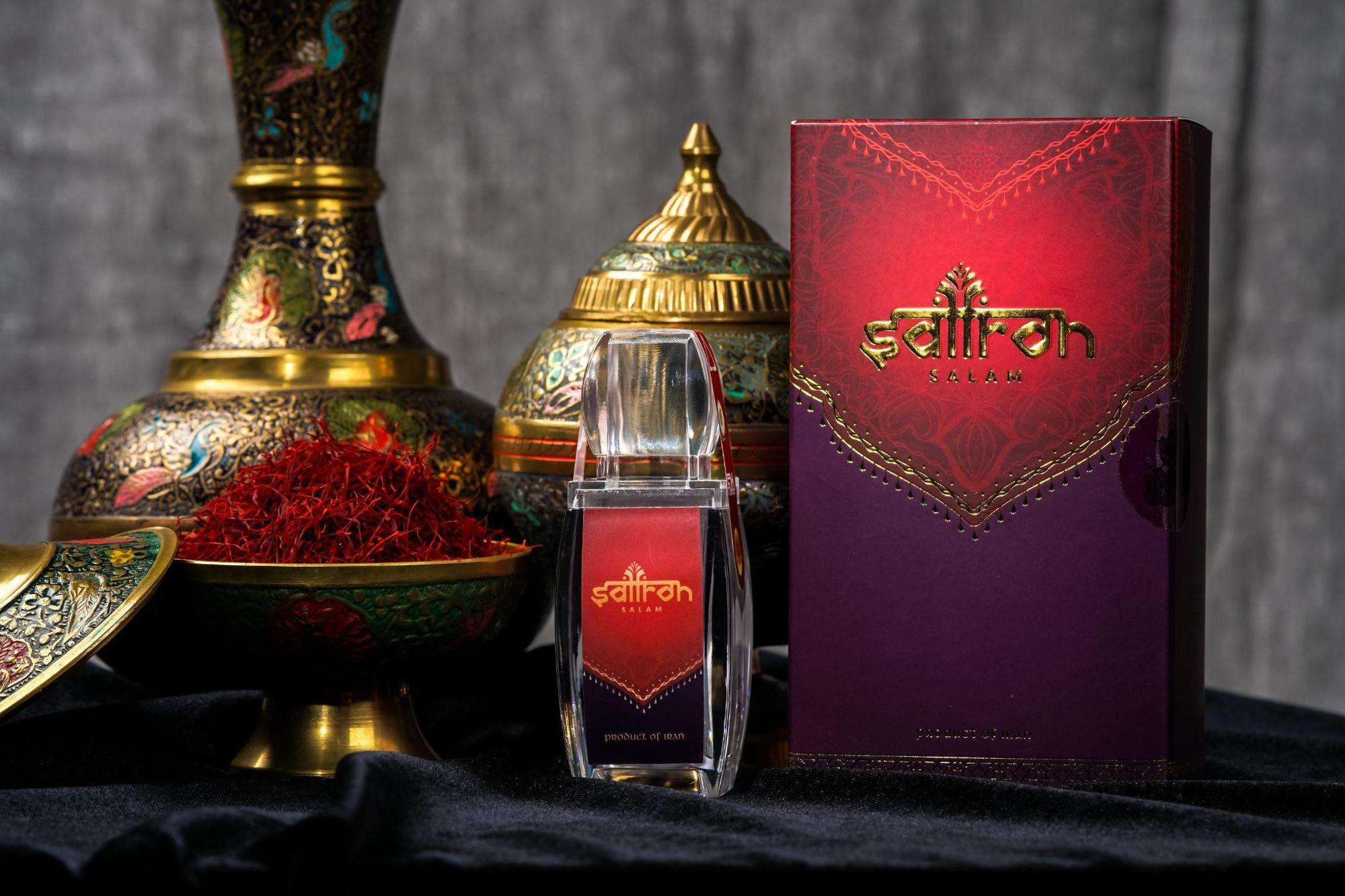
Negin Saffron Mashhad
Saffron Negin Salam is grown in the high mountains of the Mashhad region, where the air is fresh. Saffron is watered with dew, due to resistant to the dry wind blowing in the summer, so the surviving plants have the most intense vitality.
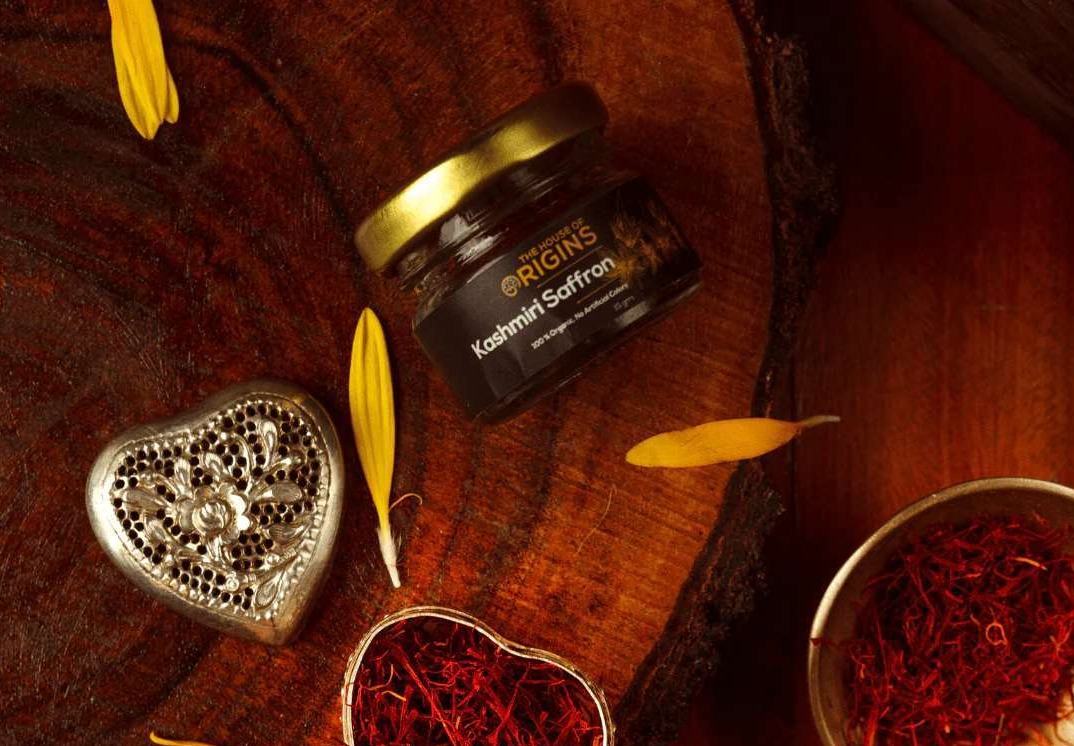
Negin Saffron Kashmiri
Negin Saffron from The House of Origins is legally sourced with high quality. There are a plethora of famous saffron raw material areas, but the Kashmiri pistil from India has a better quality because the climatic and soil conditions are more suitable for them. Each Kashmiri saffron has 3 delicate branches of saffron that are skillfully hand-picked by the local Lethapora farmer community to bring you the original and pure 'red gold'.
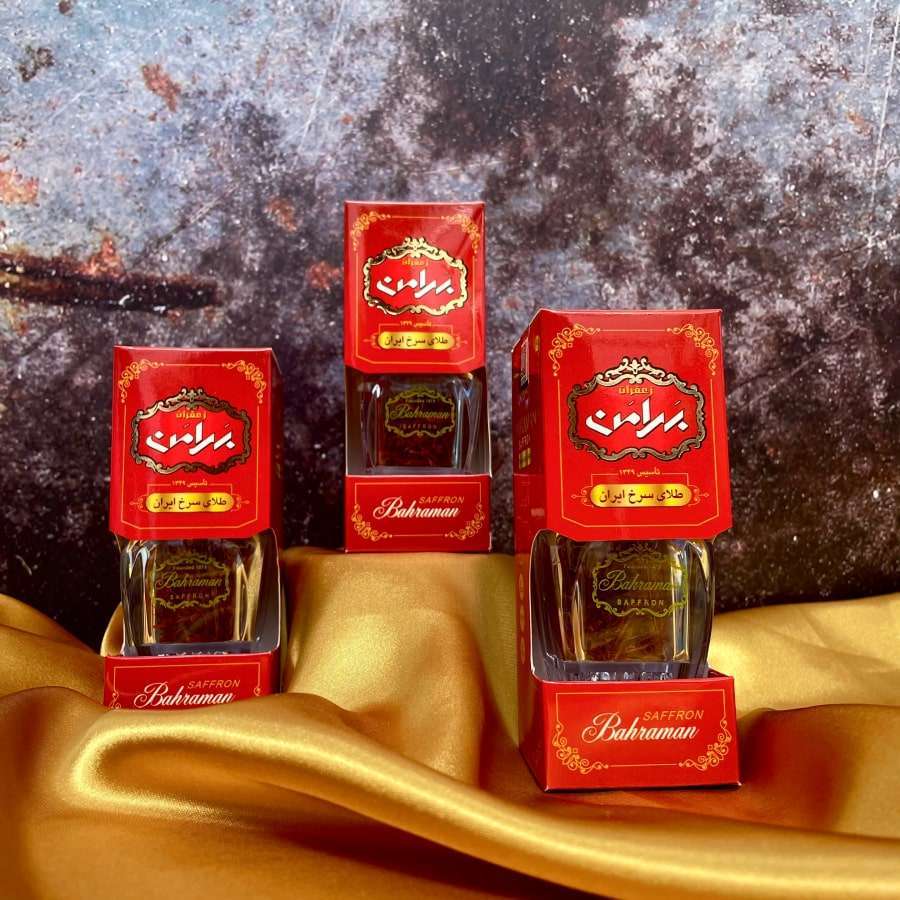
Negin Saffron Iran
Negin Saffron Bahraman is a dried saffron pistil produced by Bahraman Saffron Iran company. Saffron Bahraman is known as one of the most valuable and expensive herbs in the Middle East. Bahraman products are the output of a growing, cultivating and harvesting process that uses a limited amount of fertilizer. Therefore, bahraman saffron still ensures high quality, retains aroma and high nutritional content to ensure safety for users.

